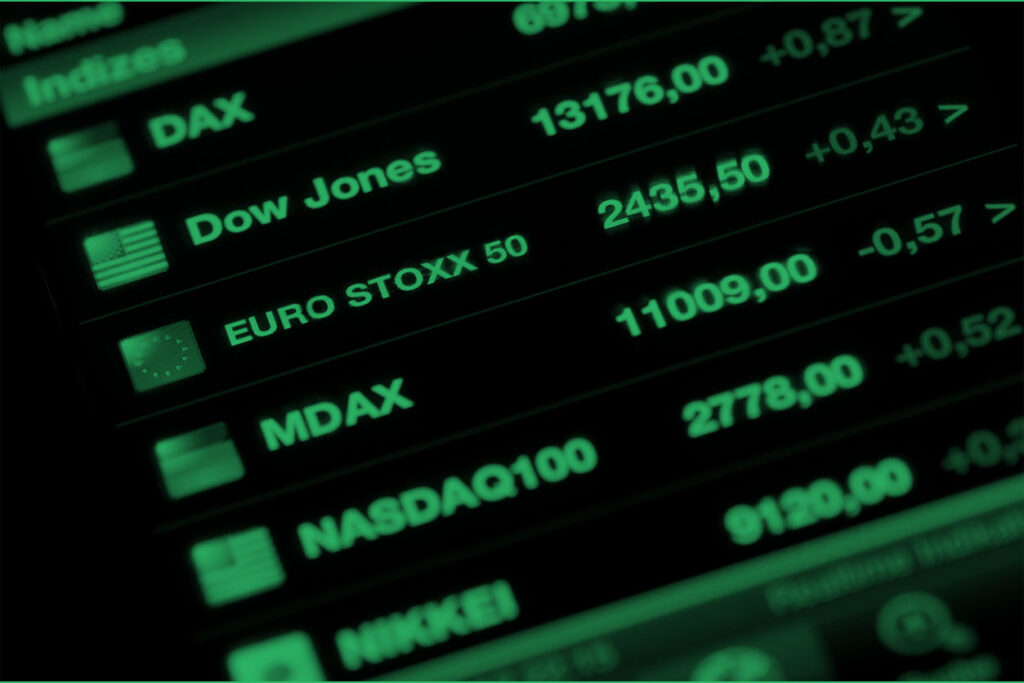Understanding the Market Gap – when it happens and why?
While CFD trading offers numerous opportunities for profit, it also involves inherent risks. One of the key phenomena that traders encounter in CFD trading is the market gap. In this article, we will delve into what a market gap is, why it occurs, and when traders are most likely to experience it.

Understanding Market Gaps:
A market gap, also known as a price gap, refers to a significant difference between the closing price of an asset on one trading day and the opening price on the following trading day. A gap Can also occur intraday for stock CFDs if there’s a trading halt.In other words, it represents a break or jump in the price movement, where no trades occur within the price range that separates the closing and opening prices. Market gaps can occur in any financial market, including stocks, indices, commodities, and currencies, affecting CFD traders across various asset classes.
Causes of Market Gaps: Several factors can trigger market gaps, including:
Economic News and Events:
One of the primary catalysts for market gaps is the release of economic data, such as employment reports, GDP figures, or central bank announcements. When these events deviate significantly from expectations, they can trigger sharp movements in the market, leading to price gaps.
Corporate Announcements:
Earnings reports, mergers and acquisitions, dividend declarations, or other company-specific news can cause market gaps. Positive or negative surprises in financial results, unexpected changes in management, or major strategic shifts can all influence investor sentiment and result in significant price gaps.
Political and Geopolitical Developments:
Political events, such as elections, referendums, or policy changes, can introduce considerable uncertainty into the market. Geopolitical tensions, trade disputes, or unexpected policy decisions by governments can also contribute to market gaps as investors react to new information.
Overnight and Weekend Gaps:
Due to the global nature of financial markets, trading activity continues around the clock. When major news or events occur outside regular trading hours, such as over weekends or during holidays, price gaps can materialize as markets react to the accumulated news during the closed period.
Illiquid Markets:
In illiquid markets or low-volume trading periods, even relatively small trades can have a disproportionate impact on prices. This can lead to exaggerated price gaps as a result of a lack of participants willing to trade at certain price levels.

When Does It Happen?
Market gaps can occur at any time, and their frequency and magnitude can vary depending on market conditions. However, some situations are more prone to experiencing gaps:
Volatile Markets:
During periods of high volatility, market gaps are more likely to happen. Increased volatility implies greater price fluctuations, making it more challenging for market participants to accurately predict price movements.
Thinly Traded Instruments:
Less-liquid financial instruments, such as low-cap stocks or exotic currency pairs, are more susceptible to market gaps. Limited trading activity can magnify the impact of a significant order or news event, resulting in more pronounced price gaps.
News-Driven Environments:
Market gaps often occur immediately after the release of important news or events. Traders react to new information, causing sudden shifts in supply and demand dynamics and leading to price gaps.
Overnight and Weekend Gaps:
As mentioned earlier, market gaps are more common during periods when markets are closed or have limited trading activity, such as overnight or over weekends.
Managing Market Gaps in CFD Trading

Market gaps can pose both risks and opportunities for CFD traders. To manage the impact of market gaps, traders can consider implementing the following strategies:
Using Stop Loss Orders:
Placing stop loss orders can help limit potential losses in the event of a market gap. Stop loss orders automatically close out positions at a specified price level, reducing the potential for significant losses.
Being Cautious Around News Events:
Traders should be aware of upcoming news releases and their potential impact on the market and should be mindful of gapping risks particularly if placing trades immediately before or during major news events.
Diversifying Investments:
Spreading investments across multiple asset classes, instruments, or markets can help mitigate the impact of a market gap on an individual position. Diversification can reduce the overall risk exposure of a trader’s portfolio.

In the realm of CFD trading, market gaps can present both risks and opportunities. Traders need to understand the causes and potential timing of market gaps to make informed decisions and manage their trading strategies effectively.
Market gaps are an inherent part of CFD trading and can occur due to various factors, including economic news, corporate announcements, geopolitical developments, and illiquid markets. Traders must be aware of the causes and circumstances that can lead to market gaps and employ prudent risk management strategies to navigate these price disparities successfully. By staying informed about market conditions, implementing risk management measures, and adopting a diversified approach, traders can navigate the uncertainties associated with market gaps in CFD trading.
* The information provided here has been prepared by Eightcap’s team of analysts. All expressions of opinion are subject to change without notice. Any opinions made may be personal to the author and do not reflect the opinions of Eightcap.
In addition to the disclaimer on our website, the material on this page does not contain a record of our trading prices, or represent an offer or solicitation for a transaction in any financial instrument. Eightcap accepts no responsibility for any use that may be made of these comments and for any consequences that result. No representation or warranty is given as to the accuracy or completeness of this information. Consequently, any person acting on it does so entirely at their own risk. Any research provided does not have regard to the specific investment objectives, financial situation and needs of any specific person who may receive it. It has not been prepared in accordance with legal requirements designed to promote the independence of investment research and as such is considered to be a marketing communication.
Please note that past performance is not a guarantee or prediction of future performance. This communication must not be reproduced or further distributed without prior permission.


